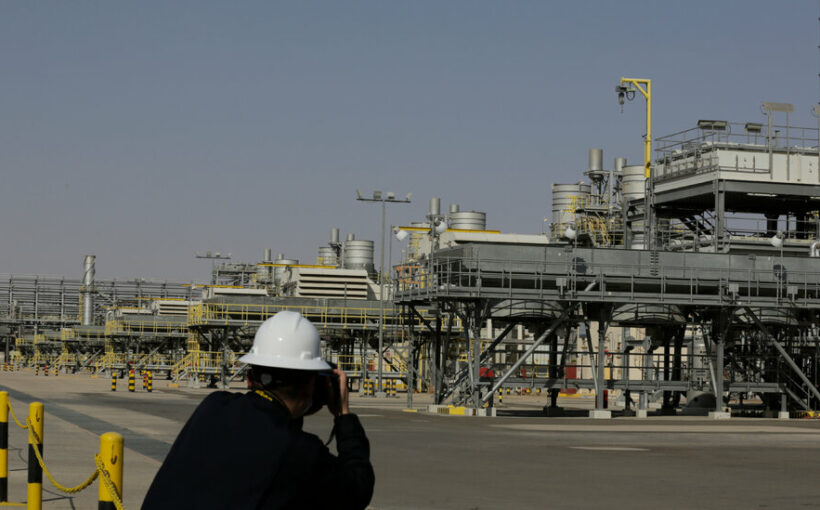Saudi Arabia, Russia and their oil-producing allies announced on Sunday that they would cut production by more than 1.2 million barrels of crude a day, or more than 1 percent of world supplies, in an apparent effort to increase prices.
Oil prices soared as markets opened Sunday evening, with both the American and global oil benchmark prices rising by 7 percent.
The production cut was unexpected because leaders of the group, known collectively as OPEC Plus, said in recent days that they did not intend to make changes in their policies. While the announcement was a surprise, its significance may ultimately be slight, especially if the global economy slows.
The alliance produced nearly two million barrels below its supply target in February, the last month for which official output figures are available. “We expect shortfalls to continue,” said Ha Nguyen, a global oil analyst for S&P Global Commodity Insights.
There have been persistent reports that Russia is struggling to keep up production without the benefit of Western service companies that have wound down their operations since the Russian invasion of Ukraine more than a year ago. Saudi production has also been below its production quota set by Organization of the Petroleum Exporting Countries in recent months.
Taking up the slack in supplying the 100-million-barrel-a-day global market are Brazil, Canada, Guyana, Norway and the United States. All are increasing their oil production.
Still, the OPEC Plus action has symbolic importance at a time when oil prices are a third below where they were immediately after Russia’s invasion of Ukraine last February. OPEC Plus members may be responding to growing fears of a recession later this year in the wake of the failure of several American and European banks as well as central bankers’ continued efforts to tame inflation. Oil demand has also been undercut by strikes in France, including at refineries.
“We don’t think cuts are advisable at this moment given market uncertainty,” said Adrienne Watson, a spokeswoman with the U.S. National Security Council, adding, “We’re focused on prices for American consumers, not barrels, and prices have come down significantly since last year.”
Saudi Arabia and Russia will lead in making the announced cuts, with declines of 500,000 barrels each, followed by Iraq, United Arab Emirates and Kuwait. Some analysts said the move could spur more investor speculative interest in oil futures and help drive oil prices higher in coming weeks.
“I really am surprised,” said Tom Kloza, the global head of energy analysis at the Oil Price Information Service. Mr. Kloza said he expected that the Brent global oil price benchmark, which has been hovering at $75 to $80 a barrel in recent weeks, would climb above $80. On Sunday evening, the price of Brent crude surged to $85.48 a barrel. West Texas Intermediate, the American benchmark, rose to $81.04.
Various energy experts estimated the eventual cut differently. Helima Croft, head of global commodity strategy at RBC Capital Markets, said that the voluntary cuts on paper amounted to more than 1.6 million barrels a day but, she added, the “real effect could be around 700,000 barrels a day.”
The global oil market is roughly 102 million barrels a day.
In recent years, Saudi Arabia, the leader of the group, has appeared determined to lift prices to around $90 a barrel. Ms. Croft said she saw the latest OPEC Plus cut as “just one more indication that the Saudi leadership is moving its oil production decisions with a clear eye to their own economic self-interests.” Other experts saw it as another sign of growing Saudi independence from the United States, with its relationship to China increasing in importance. It is already a vital partner of Russia’s in directing oil supply levels.
The cuts, which are voluntary and start in May, could be temporary depending on economic conditions.
Just last week, Saudi Aramco, the Saudi state oil company, announced two deals with China to supply refineries there with 690,000 barrels a day. Demand for oil continues to rebound from the global slowdown amid the Covid-19 pandemic. World diesel demand has nearly recovered to its levels before the pandemic, and jet fuel demand continues to surge as China emerges from its Covid shutdown.
The cuts come as gasoline prices, still well below where they were a year ago, are rising again. The average price for regular gasoline in the United States on Sunday was $3.51 a gallon, 13 cents above a month ago. The price a year ago was $4.20 a gallon, and was a major factor in the rise of inflation.
The cartel agreed in October to output cuts of two million barrels a day, but the ultimate reduction was well below that as producing countries like Libya and Nigeria agreed to cut to levels that they could not reach anyway.
The group had last slashed production in 2020, when demand collapsed because of the pandemic. It then gradually increased production until October.
Zolan Kanno-Youngs contributed reporting.
Source: Read Full Article
